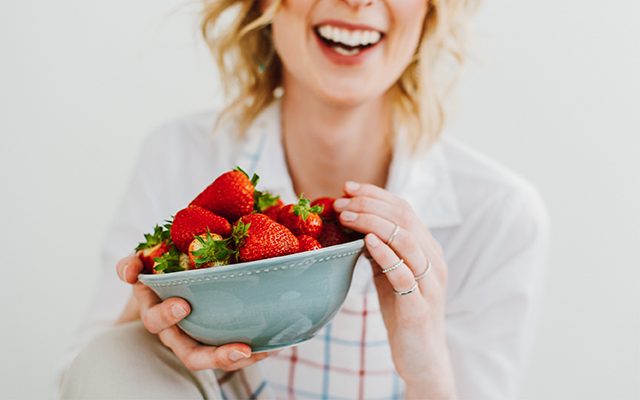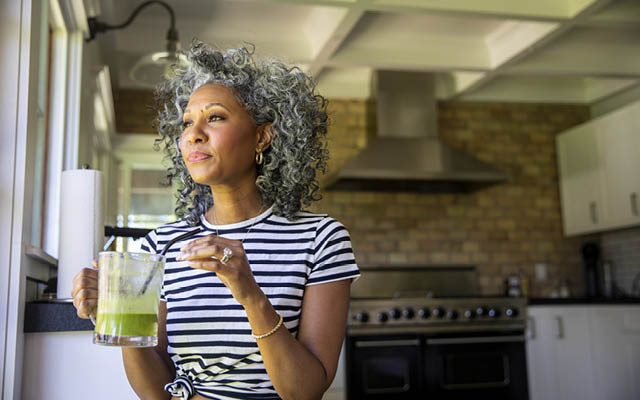Food is a delight to the senses — all the senses. Taste, of course, but also enticing aromas, the texture of foods on your tongue, the hiss of ingredients hitting hot oil, the beautiful color of perfectly cooked vegetables.
Although eating a dish is always a sensory experience, it’s easy to forget that engaging our senses while we’re cooking unlocks a wealth of information — much more than simply following a recipe and hoping for the best.
An immersive approach can transform your abilities as a home chef, whether you’re an occasional cook or you break out the pots and pans every night. It can open the door to creating dishes tailored to your own palate and give you the confidence to experiment more freely in the kitchen.
Consider these ideas for engaging and embracing your senses to create memorable meals.
Sight
If you’re beginning your journey of learning to cook by sense, recognizing visual cues is a brilliant place to start.
- A glance at a pan can tell you if you need more or less oil, butter, or ghee. “Let your eyes, ears, and taste buds guide in how much fat you use,” writes chef Samin Nosrat in her book Salt, Fat, Acid, Heat. “Say a recipe asks you to cook two diced onions in 2 tablespoons of olive oil. In a small pan, that might be enough to coat the bottom, but in a larger pan with greater surface area, it probably isn’t. Instead of just following a recipe, use your common sense, too.”
- When sautéing onions, watch them turn from opaque to translucent as they sizzle. It’s a far more reliable method than the vague “five to seven minutes” instruction you often encounter in recipes.
- Your eyes are excellent tools for determining how large or small to chop ingredients, which in turn informs how long they’ll need to cook.
- Watch the color of ingredients change while they’re cooking. Look for rich golden browns, whether you’re making zucchini fritters or roasting a chicken. This can tell you when food is done or when things have progressed enough for you to move on to the next step in your recipe.
Taste
There is nothing more important in cooking than honing your taste buds, says chef Christine Ha, the first blind contestant to win MasterChef. “Food is most enjoyable when everything is balanced and harmonious,” she explains. And the only way to know for sure is by tasting your food as you cook.
- Dip a spoon into a pot of curry as it simmers. Does it need more salt? Is there enough spice? Your efforts should yield a meal whose elements enhance each other to deliver gorgeous texture and balanced flavor.
- When it comes to taste, a little contrast can go a long way. Add plenty of crunchy vegetables to a noodle stir-fry, or a splash of vinegar to a honey glaze — juxtaposition could be the missing note that turns your dish into a symphony.
- Tasting certain foods can indicate doneness. Nibble the end of a spaghetti strand to know when it’s perfectly al dente, or sample a soup to determine if it’s reduced enough.
Smell
The aromas of cooking don’t just work up your appetite and play a role in how you taste your food: They also offer essential clues during the cooking process. Sometimes you smell burning before you see it, especially if you’re roasting meat or toasting nuts.
- Many ingredients — like garlic, ginger, and fresh turmeric, for instance — become more aromatic as they cook, which usually means it’s time to move on to the next step. Dry-roasting whole spices releases their aromatic compounds, adding more flavor to a dish. The heady fragrance rising from the skillet tells you they’re ready to be ground. Butter takes on a rich, nutty aroma when it’s browned. When cooking with wine, you’ll be able to smell when the alcohol has burned off.
- When whisking together a seasoned coating for fried chicken or fish, you should be able to smell the ingredients mixed in with the flour. This also works when you’re seasoning meatballs or making falafel — check for the scent of fresh herbs and fragrant spices. If it doesn’t smell flavorful, make adjustments.
- Barring obvious signs like mold, your olfactory sense is your first line of defense in gleaning whether ingredients are off. If a quick whiff says something doesn’t smell right, compost it. On the flip side, smelling fresh fruit is one of the best ways to gauge ripeness.
Touch
You might feel a little put off by handling your food, but touch is a clever way to figure out the doneness of meat or the freshness of produce. Get your fingers in there and feel what your food has to say.
- Pick up a tomato, bell pepper, or plum: They should be firm but not hard to the touch.
- While you won’t want to stick a finger in a simmering pot, stirring and feeling the thickness of a sauce via the resistance against a spoon can indicate it has reduced enough.
- Hover your hand over a wok to know when the pan is hot enough to start frying.
- You can also use the touch test to check if meat is cooked through. First, relax your hand and press the fleshy area of your palm directly below your thumb. This is how raw meat feels. Next, touch your thumb and pinky finger together — the same part of your palm below your thumb will have the same firmness of well-done meat. Thumb to ring finger and thumb to middle finger are medium and medium rare, respectively.
Sound
Listen to the pan sizzling. A dry sound means you need to add another splash of oil to the pan; too much noise may mean you need to lower the heat. Sound also lets you know if your pot is about to boil over or when all the liquid has cooked off.
- You can hear when the moisture has cooked off your tofu or meat, which is a sign that it’s become crisp. When it’s ready to flip, the sound will shift from wet bubbling to a dry hiss.
- The crunch of lettuce or sharpness of celery or an apple indicates it’s fresh.
- Tapping the bottom of a freshly baked loaf of bread and listening for a hollow sound lets you know when it’s cooked through, cooled, and safe to slice. Cutting into the loaf before it sounds hollow will leave you with gummy, dense bread.
Intuition
Once you master relying on your five senses in the kitchen, you open up the door to a sixth sense: intuition. You’ll develop the confidence to deviate from recipes and make your own mouthwatering creations. Think of it like an improv comedy show instead of a scripted sitcom.
- By using your five senses, you’ll develop a knack for knowing which ingredients play well together. Conjure up flavors in your mind to make creative pairings, like a sprinkle of smoked salt over fresh tropical fruits.
- Listen to your gut when shopping for ingredients. Maybe a recipe calls for lettuce and the options at the market look wilted. Rely on your intuition to decide what to use as a substitute. That red cabbage could be a beautiful swap!
- Delve into your imagination to concoct fabulous recipes with nothing more than what you have on hand.
“Food is a multisensory experience,” Ha says, “so utilizing all your senses to assess your food will help make a better dish.” And it’s within everyone’s reach. Immerse yourself in the cooking process, and with a little trial and error you can create meals that will outshine anything you can find in a cookbook.
This article originally appeared as “Cook With Your Senses” in the June 2021 issue of Experience Life.





This Post Has 0 Comments